St Thomas in Italy
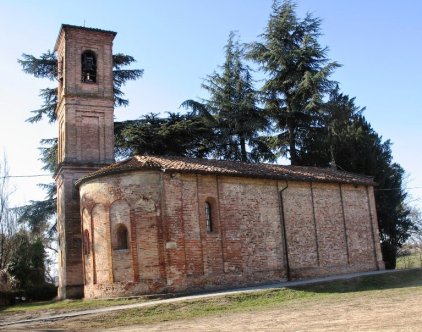
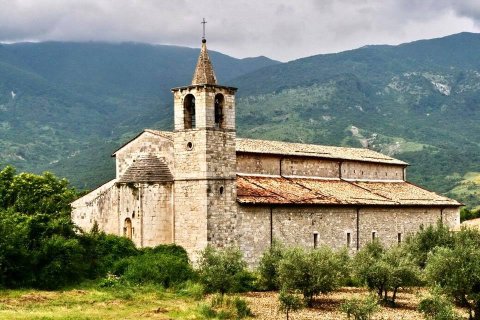
Chiesa di San Tommaso Becket a Cabriolo, Fidenza (Parma),
XII secolo
Chiesa di San Tommaso Becket Caramanico Terme, Abruzzo
The cult of St Thomas of
Canterbury is very widespread in Italy. As we shall see, perhaps the
earliest image of him as a martyr is found in Sicily. So why is this?
Shaping a Saint’s Identity: The
Imagery of Thomas Becket in Medieval Italy, a paper by Constanza
Cipollaro and Veronika Decker, offers some interesting ideas.
One answer is Thomas’s
exile. It is often assumed that he went alone, but this is not the
case: many members of his family went as well. A nephew, Gilbert, went
to the Norman kingdom of Sicily. In a letter, Becket entrusted him to
the bishop of Syracuse. A later letter from Becket to the queen regent
of Sicily in 1169 thanks her for giving ‘solace to our fellow-exiles,
outlawed for Christ, in their affliction. And to our own relatives, who
fled to your lands before the face of the persecutor.’
There is a political strand to the story, both in Sicily and elsewhere on
the Italian peninsula. In
1168, two years before the martyrdom, Henry II had arranged a marriage
for his infant daughter Joan to William II of Sicily, who was as yet too
young to take the throne. Following the death of Thomas, this was called
off, but after Henry’s penitence the marriage took place in 1177.
The relic shown below left, given to the regent queen by an English
bishop, commemorated the marriage: it contained a part of Thomas’s
blood-soaked clothing. The mosaic, from the cathedral in Monreale, was
commissioned in 1178, just a few years after Becket’s canonization in
1173.

Metropolitan Museum, New York

Moving away from politics, Becket was seen as a saint of great significance for a reason already mentioned: the liturgy. Here was a man of great holiness, murdered in a sacred place on the orders of a king and whose blood was believed to work miracles. The biblical parallels were all too clear. The book by Kay Brainerd Slocum mentioned above describes in detail the place of Becket in the ritual and liturgy of many Italian churches. There are records of Italians making pilgrimages - to Canterbury.
Many churches had an altar dedicated to Thomas and art featuring him. The panel below comes from Santa Maria Novella in Florence. Thomas is on the extreme right.

Attrib. to Andrea da Firenze. National Gallery, London
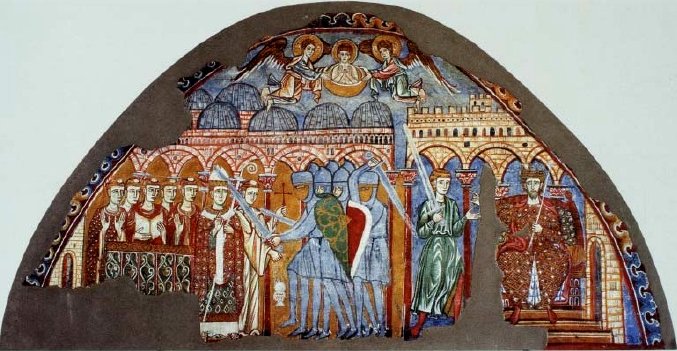
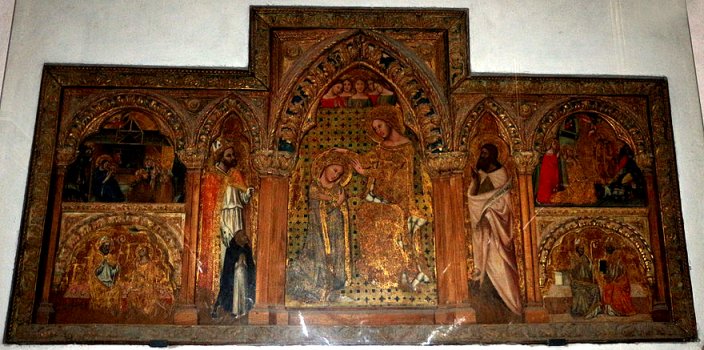
Vitale da Bologna, Polyptych with the Coronation of the
Virgin, San Salvatore, Bologna. Becket is on the left.
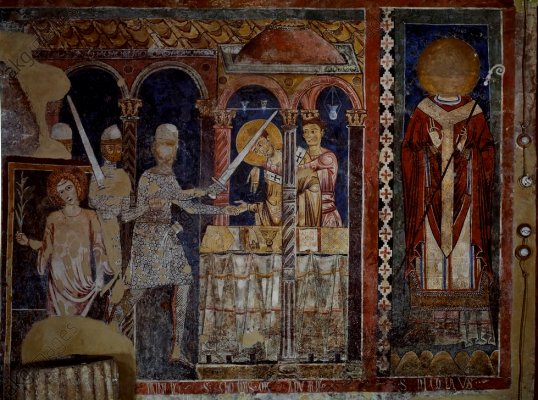
Fresco, San Giovanni e San Paolo, Spoleto. C 1175
Following the martyrdom, the Becket cult spread across Europe, including Spain, Germany and Scandinavia.
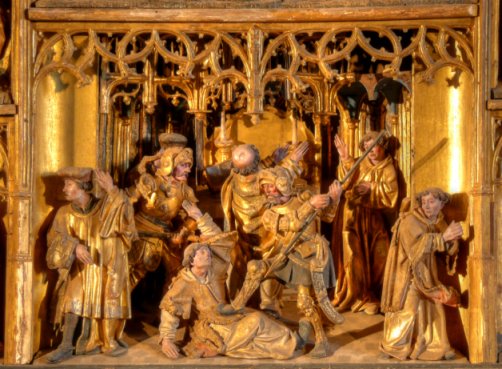
St Mary’s, Waase, Germany. The ‘Antwerp’ retable. Early 16th century
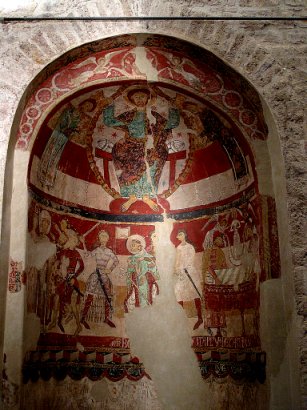
Fresco, Santa Maria de Terrassa, Catalonia, Spain. Early 13th century